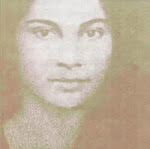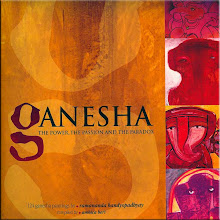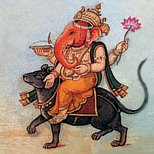
Mushaka vahana means "having a mouse or rat for a vehicle".






 Statue of the Mushaka (mouse or rat), vehicle of Shri Ganesha, before the Ganesha Swayambhu temple at Ganapatipule, on the coast of Maharashtra, India.
Statue of the Mushaka (mouse or rat), vehicle of Shri Ganesha, before the Ganesha Swayambhu temple at Ganapatipule, on the coast of Maharashtra, India.









In this book, Ganesha: The Auspicious The Beginning, Smt. Shakunthala Jagannathan and Dr. Nanditha Krishna, mother and daughter, have brought out the relevance and importance of Ganesha from ancient times to the present day.
They have covered historical and archaeological evidence, legends and parables, and Ganesha imagery in India and abroad to make a multi-dimensional study of this deity through the ages. The chapters on Symbolism and Worship of Ganesha explain his symbolic importance and modes of worship.
Copiously illustrated with a number of colour and black-and-white photographs (several of rare antiques) and with attractive line drawings, this comprehensive book covers all aspects of this greatly adored deity. The book would be of equal interest to the layman, the scholar and the devotee and a valuable addition to every home and library.(from a review of the book)
- Shri Mataji Nirmala Devi,








